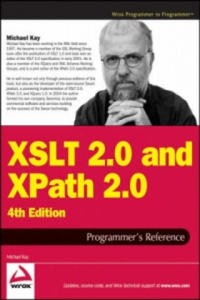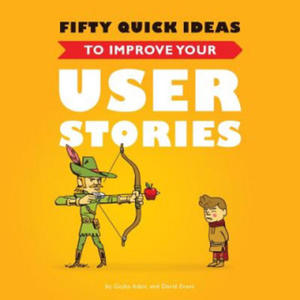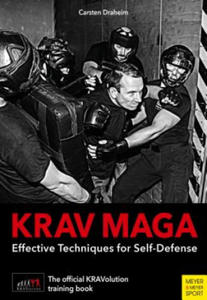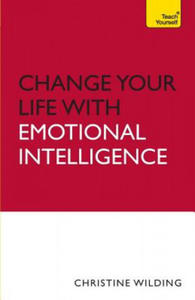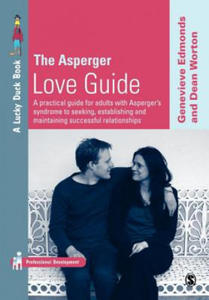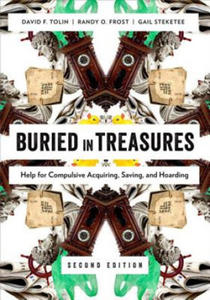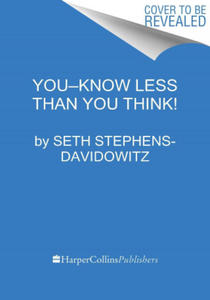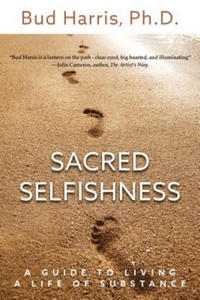krainaksiazek the big book of self help tips 20121142
- znaleziono 232 produkty w 12 sklepach
Creative Flash Photography Rocky Nook
Książki / Literatura obcojęzyczna
This book is all about making a big impression with small flashes! You too can make magic by mastering the use of light, and Tilo Gockel shows you how. Learn to use small flash units to create great photographs in any lighting situation. In this book, Tilo shares his methods for producing impressive flash shots in portrait, fashion, macro, food, still life, and high-speed photography. This richly illustrated, easy-to-understand book is filled with recommendations and instructions for flash setups, detailed lighting diagrams, and information on the settings that will help you master complex multi-flash situations. Also included is a collection of tips on how to create cost-effective, self-built accessories. Foreword by Strobist.com's David Hobby.
Sklep: Libristo.pl
Under the Duvet Penguin
Powieści i opowiadania
'When people ask me what I do for a crust and I tell them that I'm a novelist, they immediately assume that my life is a non-stop carousel of limos, television appearances, hair-dos, devoted fans, stalkers and all the glitzy paraphernalia of being a public figure. It's time to set the record straight. I write alone, in a darkened bedroom, wearing my PJs, eating bananas, my laptop on a pillow in front of me ...' Her novels are adored by millions around the world
Sklep: Albertus.pl
XSLT 2.0 and XPath 2.0 Programmer's Reference 4e John Wiley & Sons Inc
Książki / Literatura obcojęzyczna
This book is primarily a practical reference book for professional XSLT developers. It assumes no previous knowledge of the language, and many developers have used it as their first introduction to XSLT; however, it is not structured as a tutorial, and there are other books on XSLT that provide a gentler approach for beginners. The book does assume a basic knowledge of XML, HTML, and the architecture of the Web, and it is written for experienced programmers. There's no assumption that you know any particular language such as Java or Visual Basic, just that you recognize the concepts that all programming languages have in common. The book is suitable both for XSLT 1.0 users upgrading to XSLT 2.0, and for newcomers to XSLT. The book is also equally suitable whether you work in the Java or .NET world. As befits a reference book, a key aim is that the coverage should be comprehensive and authoritative. It is designed to give you all the details, not just an overview of the 20 percent of the language that most people use 80 percent of the time.It's designed so that you will keep coming back to the book whenever you encounter new and challenging programming tasks, not as a book that you skim quickly and then leave on the shelf. If you like detail, you will enjoy this book; if not, you probably won't. But as well as giving the detail, this book aims to explain the concepts, in some depth. It's therefore a book for people who not only want to use the language but who also want to understand it at a deep level. The book aims to tell you everything you need to know about the XSLT 2.0 language. It gives equal weight to the things that are new in XSLT 2.0 and the things that were already present in version 1.0. The book is about the language, not about specific products. However, there are appendices about Saxon (the author's own implementation of XSLT 2.0), about the Altova XSLT 2.0 implementation, and about the Java and Microsoft APIs for controlling XSLT transformations, which will no doubt be upgraded to handle XSLT 2.0 as well as 1.0. A third XSLT 2.0 processor, Gestalt, was released shortly before the book went to press, too late to describe it in any detail. But the experience of XSLT 1.0 is that there has been a very high level of interoperability between different XSLT processors, and if you can use one of them, then you can use them all.In the previous edition we split XSLT 2.0 and XPath 2.0 into separate volumes. The idea was that some readers might be interested in XPath alone. However, many bought the XSLT 2.0 book without its XPath companion and were left confused as a result; so this time, the material is back together. The XPath reference information is in self-contained chapters, so it should still be accessible when you use XPath in contexts other than XSLT. The book does not cover XSL Formatting Objects, a big subject in its own right. Nor does it cover XML Schemas in any detail. If you want to use these important technologies in conjunction with XSLT, there are other books that do them justice. This book contains twenty chapters and eight appendixes (the last of which is a glossary) organized into four parts. The following section outlines what you can find in each part, chapter, and appendix. Part I: Foundations: The first part of the book covers essential concepts. You should read these before you start coding.If you ignore this advice, as most people do, then you read them when you get to that trough of despair when you find it impossible to make the language do anything but the most trivial tasks. XSLT is different from other languages, and to make it work for you, you need to understand how it was designed to be used. Chapter 1: XSLT in Context: This chapter explains how XSLT fits into the big picture: how the language came into being and how it sits alongside other technologies. It also has a few simple coding examples to keep you alert. Chapter 2: The XSLT Processing Model: This is about the architecture of an XSLT processor: the inputs, the outputs, and the data model. Understanding the data model is perhaps the most important thing that distinguishes an XSLT expert from an amateur; it may seem like information that you can't use immediately, but it's knowledge that will stop you making a lot of stupid mistakes. Chapter 3: Stylesheet Structure: XSLT development is about writing stylesheets, and this chapter takes a bird's eye view of what stylesheets look like.It explains the key concepts of rule-based programming using templates, and explains how to undertake programming-in-the-large by structuring your application using modules and pipelines. Chapter 4: Stylesheets and Schemas: A key innovation in XSLT 2.0 is that stylesheets can take advantage of knowledge about the structure of your input and output documents, provided in the form of an XML Schema. This chapter provides a quick overview of XML Schema to describe its impact on XSLT development. Not everyone uses schemas, and you can skip this chapter if you fall into that category. Chapter 5: The Type System: XPath 2.0 and XSLT 2.0 offer strong typing as an alternative to the weak typing approach of the 1.0 languages. This means that you can declare the types of your variables, functions, and parameters, and use this information to get early warning of programming errors. This chapter explains the data types available and the mechanisms for creating user-defined types. Part II: XSLT and XPath Reference: This section of the book contains reference material, organized in the hope that you can easily find what you need when you need it.It's not designed for sequential reading, though you might well want to leaf through the pages to discover what's there. Chapter 6: XSLT Elements: This monster chapter lists all the XSLT elements you can use in a stylesheet, in alphabetical order, giving detailed rules for the syntax and semantics of each element, advice on usage, and examples. This is probably the part of the book you will use most frequently as you become an expert XSLT user. It's a "no stone unturned" approach, based on the belief that as a professional developer you need to know what happens when the going gets tough, not just when the wind is in your direction. Chapter 7: XPath Fundamentals: This chapter explains the basics of XPath: the low-level constructs such as literals, variables, and function calls. It also explains the context rules, which describe how the evaluation of XPath expressions depends on the XSLT processing context in which they appear. Chapter 8: XPath: Operators on Items: XPath offers the usual range of operators for performing arithmetic, boolean comparison, and the like.However, these don't always behave exactly as you would expect, so it's worth reading this chapter to see what's available and how it differs from the last language that you used. Chapter 9: XPath: Path Expressions: Path expressions are what make XPath special; they enable you to navigate around the structure of an XML document. This chapter explains the syntax of path expressions, the 13 axes that you can use to locate the nodes that you need, and associated operators such as union, intersection, and difference. Chapter 10: XPath: Sequence Expressions: Unlike XPath 1.0, in version 2.0 all values are sequences (singletons are just a special case). Some of the most important operators in XPath 2.0 are those that manipulate sequences, notably the "for" expression, which translates one sequence into another by applying a mapping. Chapter 11: XPath: Type Expressions: The type system was explained in Chapter 5; this chapter explains the operations that you can use to take advantage of types. This includes the "cast" operation which is used to convert values from one type to another.A big part of this chapter is devoted to the detailed rules for how these conversions are done.Chapter 12: XSLT Patterns: This chapter returns from XPath to a subject that's specific to XSLT. Patterns are used to define template rules, the essence of XSLT's rule-based programming approach. The reason for explaining them now is that the syntax and semantics of patterns depends strongly on the corresponding rules for XPath expressions. Chapter 13: The Function Library: XPath 2.0 includes a library of functions that can be called from any XPath expression; XSLT 2.0 extends this with some additional functions that are available only when XPath is used within XSLT. The library has grown immensely since XPath 1.0. This chapter provides a single alphabetical reference for all these functions. Chapter 14: Regular Expressions: Processing of text is an area where XSLT 2.0 and XPath 2.0 are much more powerful than version 1.0, and this is largely through the use of constructs that exploit regular expressions. If you're familiar with regexes from languages such as Perl, this chapter tells you how XPath regular expressions differ. If you're new to the subject, it explains it from first principles.Chapter 15: Serialization: Serialization in XSLT means the ability to generate a textual XML document from the tree structure that's manipulated by a stylesheet. This isn't part of XSLT processing proper, so (following W3C's lead) it's separated it into its own chapter. You can control serialization from the stylesheet using an declaration, but many products also allow you to control it directly via an API. Part III: Exploitation: The final section of the book is advice and guidance on how to take advantage of XSLT to write real applications. It's intended to make you not just a competent XSLT coder, but a competent designer too. The best way of learning is by studying the work of others, so the emphasis here is on practical case studies. Chapter 16: Extensibility: This chapter describes the "hooks" provided in the XSLT specification to allow vendors and users to plug in extra functionality. The way this works will vary from one implementation to another, so we can't cover all possibilities, but one important aspect that the chapter does cover is how to use such extensions and still keep your code portable.Chapter 17: Stylesheet Design Patterns: This chapter explores a number of design and coding patterns for XSLT programming, starting with the simplest "fill-in-the-blanks" stylesheet, and extending to the full use of recursive programming in the functional programming style, which is needed to tackle problems of any computational complexity. This provides an opportunity to explain the thinking behind functional programming and the change in mindset needed to take full advantage of this style of development. Chapter 18: Case Study: XMLSpec: XSLT is often used for rendering documents, so where better to look for a case study than the stylesheets used by the W3C to render the XML and XSLT specifications, and others in the same family, for display on the web? The resulting stylesheets are typical of those you will find in any publishing organization that uses XML to develop a series of documents with a compatible look-and-feel. Chapter 19: Case Study: A Family Tree: Displaying a family tree is another typical XSLT application.This example with semi-structured data-a mixture of fairly complex data and narrative text-that can be presented in many different ways for different audiences. It also shows how to tackle another typical XSLT problem, conversion of the data into XML from a legacy text-based format. As it happens, this uses nearly all the important new XSLT 2.0 features in one short stylesheet. But another aim of this chapter is to show a collection of stylesheets doing different jobs as part of a complete application. Chapter 20: Case Study: Knight's Tour: Finding a route around a chessboard where a knight visits every square without ever retracing its steps might sound a fairly esoteric application for XSLT, but it's a good way of showing how even the most complex of algorithms are within the capabilities of the language. You may not need to tackle this particular problem, but if you want to construct an SVG diagram showing progress against your project plan, then the problems won't be that dissimilar. Part IV: Appendices: A ppendix A: XPath 2.0 Syntax Summary: Collects the XPath grammar rules and operator precedences into one place for ease of reference.Appendix B: Error Codes: A list of all the error codes defined in the XSLT and XPath language specifications, with brief explanations to help you understand what's gone wrong. Appendix C: Backward Compatibility: The list of things you need to look out for when converting applications from XSLT 1.0. Appendix D: Microsoft XSLT Processors: Although the two Microsoft XSLT processors don't yet support XSLT 2.0, we thought many readers would find it useful to have a quick summary here of the main objects and methods used in their APIs. Appendix E: JAXP: the Java API for XML Processing: JAXP is an interface rather than a product. Again, it doesn't have explicit support yet for XSLT 2.0, but Java programmers will often be using it in XSLT 2.0 projects, so the book includes an overview of the classes and methods available. Appendix F: Saxon: At the time of writing Saxon (developed by the author of this book) provides the most comprehensive implementation of XSLT 2.0 and XPath 2.0, so its interfaces and extensions are covered in some detail. Appendix G: Altova: Altova, the developers of XML Spy, have an XSLT 2.0 processor that can be used either as part of the development environment or as a freestanding component.This appendix gives details of its interfaces. Appendix H: Glossary Note: CD-ROM/DVD and other supplementary materials are not included as part of eBook file.
Sklep: Libristo.pl
Fifty Quick Ideas to Improve Your User Stories Neuri Consulting LLP
Książki / Literatura obcojęzyczna
This book will help you write better stories, spot and fix common issues, split stories so that they are smaller but still valuable, and deal with difficult stuff like crosscutting concerns, long-term effects and non-functional requirements. Above all, this book will help you achieve the promise of agile and iterative delivery: to ensure that the right stuff gets delivered through productive discussions between delivery team members and business stakeholders. Who is this book for? This is a book for anyone working in an iterative delivery environment, doing planning with user stories. The ideas in this book are useful both to people relatively new to user stories and those who have been working with them for years. People who work in software delivery, regardless of their role, will find plenty of tips for engaging stakeholders better and structuring iterative plans more effectively. Business stakeholders working with software teams will discover how to provide better information to their delivery groups, how to set better priorities and how to outrun the competition by achieving more with less software. What's inside? Unsurprisingly, the book contains exactly fifty ideas. They are grouped into five major parts: - Creating stories: This part deals with capturing information about stories before they get accepted into the delivery pipeline. You'll find ideas about what kind of information to note down on story cards and how to quickly spot potential problems. - Planning with stories: This part contains ideas that will help you manage the big-picture view, set milestones and organise long-term work. - Discussing stories: User stories are all about effective conversations, and this part contains ideas to improve discussions between delivery teams and business stakeholders. You'll find out how to discover hidden assumptions and how to facilitate effective conversations to ensure shared understanding. - Splitting stories: The ideas in this part will help you deal with large and difficult stories, offering several strategies for dividing them into smaller chunks that will help you learn fast and deliver value quickly. - Managing iterative delivery: This part contains ideas that will help you work with user stories in the short and mid term, manage capacity, prioritise and reduce scope to achieve the most with the least software. About the authors: Gojko Adzic is a strategic software delivery consultant who works with ambitious teams to improve the quality of their software products and processes. Gojko's book Specification by Example was awarded the #2 spot on the top 100 agile books for 2012 and won the Jolt Award for the best book of 2012. In 2011, he was voted by peers as the most influential agile testing professional, and his blog won the UK agile award for the best online publication in 2010. David Evans is a consultant, coach and trainer specialising in the field of Agile Quality. David helps organisations with strategic process improvement and coaches teams on effective agile practice. He is regularly in demand as a conference speaker and has had several articles published in international journals.
Sklep: Libristo.pl
DB2 Express IBM Press
Informatyka
IBM has had great success with DB2 in large corporations. However, the smalland medium sized businesses have been unwilling or unable to invest in theDB2 infrastructure and so Oracle, SQL Server, MySQL and a number of otherdatabase programs have taken these markets. DB2 Express is meant to knockthese out and to give IBM a database configurable in these "smallerenvironments". This book is the ONLY book available on a very new hotproduct that IBM will be marketing EXTENSIVELY.Our book is a concise, straight-forward approach to learning DB2 Express andhow to leverage its tools and autonomic capabilities. It provides expert tips oneverything from developing, tuning, deploying and maintaining applications.It teaches the reader how to avoid common mistakes and develop solid, yetsimple, database maintenance plans. IBM DB2 UDB Express Edition Version 8.2 delivers everything small to medium-sized businesses need to accelerate time-to-value and dramatically reduce TCO in their database applications. Now, IBM's own experts show exactly how to get started with DB2 Express, and use it to develop, deploy, and manage superior applications from start to finish.Like DB2 Express itself, this book cuts out the complexity--helping you achieve the full business benefits of today's most advanced database platform simply and quickly. You'll find step-by-step guidance and expert tips for every facet of DB2 Express development and administration, including: application design; development with both Visual Basic .NET and Java; security; deployment; performance tuning; day-to-day administration; and more. IBM's own DB2 specialists demonstrate how to use DB2 Express' graphical tools to manage DB2 more easily than any other full-function relational database. Along the way, they help you make the most of DB2 Express' powerful "autonomic" features for self-administration, self-tuning, and self-healing to drive down costs throughout the entire application lifecycle. This book will help you:Understand DB2 Express architecture and its implications for development and administration Install DB2 Express, create databases, and master essential DB2 Express tools Work with database objects: schemas, data types, tables, relationships, views, and indexes Develop VB.NET applications with ADO.NET and the DB2 .NET Data Provider Develop Java applications with JDBC and SQLJ Leverage DB2's concurrency model to design efficient transactions and improve user experience Introduce database functions, stored procedures, and triggers to improve application design Generate and manipulate data efficiently: LOAD, IMPORT, exporting to Microsoft Excel, reporting, and more Tune performance: optimize your configuration, analyze SQL with Visual Explain, and optimize SQL with Design Advisor Secure your applications: authentication, authorization, group privileges, and more Deploy to production, and master silent DB2 installations Define a solid database maintenance plan that fully leverages DB2 Express autonomic features Troubleshoot DB2 Express and avoid common pitfallsWhether you're a developer, administrator, IT manager, or end-user, this definitive single-source guide will help you achieve results fast... and maximize DB2 Express' business value, every step of the way.0131463977B08252004
Sklep: Albertus.pl
Między niebem a piekłem - Grzegorz Polaczek
Książki & Multimedia > Książki
Opis - "Między niebem a piekłem" to porywająca opowieść o dwóch banitach zesłanych na Ziemię: diable Seth'ie i aniele Bartłomieju. Przypadkowe spotkanie powoduje, iż ze względu na obopólne korzyści, postanawiają zamieszkać razem. Książka opowiada o wspólnych wysiłkach, które mają doprowadzić ich z powrotem do domu, gdzie nie będą musieli mierzyć się z codziennymi problemami życia na Ziemi. Nazwa - Między niebem a piekłem Autor - Grzegorz Polaczek Oprawa - Miękka Wydawca - Novae Res Kod ISBN - 9788377222300 Kod EAN - 9788377222300 Rok wydania - 2011 Język - polski Format - 12.0x19.5cm Ilość stron - 236 Podatek VAT - 5%
Sklep: InBook.pl
Krav Maga Meyer & Meyer Sport (UK) Ltd
Książki / Literatura obcojęzyczna
Krav Maga is a modern and proven self-defense system. Easy to learn because it is based on natural reflexes, it is extremely efficient to use against one or more attackers. There is only one goal: to survive violent conflicts as unscathed as possible. Developed by the Israeli army and formerly an insider tip in military training, this close combat system is booming worldwide. Krav Maga is not a traditional or competitive martial art but pure self-defense. It's all about survival. Its techniques are constantly developed and adapted to current threat situations.In his book Krav Maga: Effective Techniques for Self-Defense, his second on this self-defense method, the author methodically explains more than 100 Krav Maga techniques for self-defense-including more than 300 detailed photos-by using the principles that make this system so successful. It includes information on both well-founded basics as well as advanced techniques, depending on the distance to the attacker.The effective techniques for self-defense in this book help to demonstrate what Krav Maga is all about, gives exercise tips for more successful and safe execution, and provides information to help the reader further develop the learned techniques, making this the official book about Krav Maga training.
Sklep: Libristo.pl
Improve Your Handwriting John Murray Press
Książki / Literatura obcojęzyczna
Is this the right book for me? A book written specifically for adults experiencing problems with their writing. Improve Your Handwriting is the only title to be written specifically for adults who are experiencing problems with their writing. Co-authored by a world-renowned expert on handwriting and a professional calligrapher, it uses self-diagnosis tests to help you identify your problem, before encouraging you to experiment and choose the style that suits you best. Covering everything from holding a pen, to the difficulties that left-handers face, and the problems that may be caused by medical conditions, you will be come away from the book armed with the ability to write with ease and confidence.Improve Your Handwriting includes: Part One: Handwriting problems Chapter 1: Self-diagnosis Chapter 2: More about self-diagnosis Chapter 3: Practical matters Chapter 4: Help for left-handers Chapter 5: More serious problems Part Two: How to put things right Chapter 6: Regaining control Chapter 7: Rhythm and texture Chapter 8: A training model Chapter 9: Joining up Chapter 10: Personal modifications Chapter 11: Capital letters Part Three: Before and after Part Four: Finishing touches Chapter 12: Layout Chapter 13: A more formal model Learn effortlessly with a new easy-to-read page design and interactive features: Not got much time? One, five and ten-minute introductions to key principles to get you started. Author insights Lots of instant help with common problems and quick tips for success, based on the author's many years of experience. Test yourself Tests in the book and online to keep track of your progress. Extend your knowledge Extra online articles to give you a richer understanding of how to improve your handwriting. Five things to remember Quick refreshers to help you remember the key facts. Try this Innovative exercises illustrate what you've learnt and how to use it.
Sklep: Libristo.pl
Change Your Life With Emotional Intelligence John Murray Press
Książki / Literatura obcojęzyczna
Is this the right book for me? Boost emotional awareness in any part of your life Change Your Life with Emotional Intelligence takes Daniel Goleman's revolutionary psychological theory and transforms it into practical self-help for you to boost emotional awareness in any part of your life. It introduces you to the principles of EI, explaining why the qualities of assertiveness, perception, motivation etc really matter if you want to live a fulfilled and successful life. The book takes an applied approach, encouraging you first to understand your own emotional identity, then to develop life skills like developing a sense of responsibility, overcoming anger and being more assertive. It will help you to use these skills to transform relationships with those around you, either in the workplace or in personal relationships and will even offer insight into how to help your children develop emotional intelligence. It is full of interactive exercises, top tips and and motivational quotes and offers plenty of further resources.Change Your Life With Emotional Intelligence includes: Part one - Understanding emotional intelligence Chapter 1: Emotional intelligence: a first look Chapter 2: Why is emotional intelligence so important? Part two - Emotional intelligence and you: becoming personally competent Chapter 3: How do you see yourself Chapter 4: Thinking straight Chapter 5: Developing your personal core values Chapter 6: Emotional intelligence and resilience Chapter 7: Using emotional intelligence to defeat anger Part three - Emotional intelligence and others Chapter 8: Social responsibility Chapter 9: Developing communication skills Chapter 10: Emotional intelligence in the workplace Chapter 11: Emotional intelligence within an intimate relationship Chapter 12: Developing emotionally intelligent children Learn effortlessly with a new easy-to-read page design and interactive features: Not got much time? One, five and ten-minute introductions to key principles to get you started. Author insights Lots of instant help with common problems and quick tips for success, based on the author's many years of experience. Test yourself Tests in the book and online to keep track of your progress.Extend your knowledge Extra online articles to give you a richer understanding of the subject. Five things to remember Quick refreshers to help you remember the key facts. Try this Innovative exercises illustrate what you've learnt and how to use it.
Sklep: Libristo.pl
Essential University Physics Addison Wesley Publishing Company
Inne 1
Richard Wolfson's Essential University Physics is a concise and progressive calculus-based physics textbook that offers clear writing, great problems, and interesting real-life applications. At nearly half the length and half the price of other physics texts, Essential University Physics is a compelling alternative for professors who want to focus on the fundamentals. Based on Physics for Scientists and Engineers by Wolfson and Pasachoff, Essential University Physics retains many of the favorite features of the original text, while introducing new pedagogical elements that incorporate proven results from physics education research. The text focuses on the fundamentals of physics, teaches sound problem-solving skills, emphasizes conceptual understanding, and makes connections to the real world. Features such as annotated figures and step-by-step problem-solving strategies help provide a clear learning path for students. The crisp two-color design is clear and engaging. The book incorporates the research-proven approach of annotated figures, pencil-style sketches in worked examples, and visual chapter summaries. A self-evident hierarchy of pedagogical features guides the student easily through the material. Essential University Physics is offered as three paperback volumes, available shrink-wrapped together and for sale individually. (Sold individually in select markets only.) Focus on the fundamentals: The overarching theme is physics has a simple, elementary foundation that underlies seemingly disconnected topics. To Learn and To Know features offer learning goals and topics to review at each chapter's outset to highlight the chapter's key skills and ideas and its connections to other chapters. Key equations and definitions are on screened boxes with titles and explanatory material, so that students will not simply grab a bare equation with no sense as to how it is applied. Tips offer concise explanatory or cautionary notes for typical misconceptions and identify the fundamental connections between new and old topics. Visual chapter and part summaries present the big picture and provide visual reviews that focus on the concepts and connections of chapter material with an emphasis on multiple representations (words, math, and figures) of concepts. Teach sound problem-solving skills: The consistent and explicit problem-solving strategy is designed to develop students' confidence and skill in systematically setting up problems rather than diving into the math. The IDEA (Interpret, Develop, Evaluate, and Assess) framework, used in every worked example, begins with a problem's key ideas, stresses the importance of planning a solution and drawing a diagram, moves through the math, checks for reasonable answers, and relates the problem's content to a broader understanding of physics. Strategy boxes provide specialized versions of the global strategy, adapted to specific topics. Pencil-style illustrations in worked examples show realistic figures that a student should draw. Tactics boxes review mathematical topics and develop individual skills. Emphasize conceptual understanding: Got It?questions present multiple-choice and ranking task problems in most sections to focus reading and identify misconceptions. The EOC section For Thought and Discussion contains qualitative questions that test understanding and promote collaborative reading with peers. Every worked example begins byinterpreting what a problem asks and identifying the relevant concepts.Connect to the real world: Every chapter has an Application box exploring a modern, cutting-edge use of the chapter's physics in the world. Informed by physics education research, context-rich problems in the end-of-chapter material require students to analyze the significant factors in physical scenarios set in the real world. Chapter-opener photos showcase examples of physics in everyday life along with thought provoking questions.
Sklep: Albertus.pl
Asperger Love Guide SAGE Publications Inc
Książki / Literatura obcojęzyczna
'This book breaks down the social, emotional and practical aspects of relationships so usefully that it is a good resource for teachers and others working with neurotypical individuals. In fact the book so sensibly discusses pitfalls, strategies and individual responsibilities that it would be valuable reading for teenagers generally as well as for individuals with Asperger syndrome' - Tess Coll, autism outreach teacher 'The Asperger Love Guide is recommended reading for those with Asperger's syndrome who are seeking or within a relationship. The authors provide a clear explanation of how the characteristics of Asperger's syndrome can affect the development of a relationship and the expression of love. They then provide sound practical advice for individuals and couples. I really enjoyed reading The Asperger Love Guide and will be recommending the book to my clients' -- Professor Tony Attwood 'This is the first book I've read in a long time that, once started, I couldn't put down until it was finished. It is an exceptionally good read. The 77 pages are written succinctly with no waffle - just straight to the point.I will definitely buy a copy of this book for the whole family to use! I will use it to guide Joe (my 17 year old Asperger son) when he's ready for it. It's not a book he would read himself; in fact I read the section "the merits of single life" out loud to him a bit like a bed time story' - Action for ASD 'There is a great need for more awareness of Asperger syndrome and how it affects personal relationships. The National Autistic Society find this a helpful guide' - Cathy Mercer, NAS 'This book sets out some helpful facts about relationships in a neat, simple form' - Asperger United 'An excellent self 'help-text'...the book is a clear and matter-of-fact guide to relationships and is unapologetic in offering straightforward and helpful advice for romantic success...Not a word is wasted, and as well as being highly recommended for individuals with Asperger's Syndrome, should also be read by education professionals supporting young people with Asperger's Syndrome in schools, colleges and universities' - SENCO Update 'Aimed primarily at individuals with Asperger syndrome, this very readable book is in fact of use to a much wider audience.The issues are discussed openly and logically and the advice given is both sympathetic and very matter of fact...The book breaks down the social, emotional and practical aspects of relationships so usefully that it is a good resource for teachers and others working with neurotypical individuals. Infact the book so sensibly discusses pitfalls, strategies and individual responsibilities that it would be valuable reading for teenagers generally as well as for individuals with Asperger syndrome' - British Journal of Special Education Material based on the experiences of the people on the Autistic Spectrum is usually written by neurotypical writers. Here, Genevieve and Dean, both adults with Asperger's Syndrome, share their advice and tips for romantic success. The chapters cover: o building self-esteem; o the best places to meet potential partners; o dating; o maintaining relationships. Both authors work with the Asperger community, either providing support or training, so their insight is based upon other people's experiences as well as their own. This is shown in a number of case studies that support the elements described in each chapter.They write in a clear, accessible and non-patronizing way which will suit their audience. This will prove to be an invaluable book to those with Asperger's or those that support Asperger people. Dean Worton is a 31 year-old high functioning individual with a very positive expression of Asperger Syndrome. He runs a successful UK-based website for adults with Asperger Syndrome and hosts real-life meet-ups around the UK for its members. His key interest is in encouraging adults with AS to live positively and successfully with the gifts that Asperger Syndrome provides. He also works in adminstration and resides in North-West England. Genevieve Edmonds is a 23 year old with 'residual' Asperger Syndrome, which she views as a significant gift. She works as an associate of the Missing Link Support Service in Lancashire supporting those 'disabled by society' including individuals with ASD. She speaks and writes frequently in the field of Autism, along with giving training, workshops and soon counselling. She aims to empower those with ASD, carers and professionals in the understanding of Asperger Syndrome as a difference rather than an impairment.She lives and works in a solution-focused way and is based in North-West England
Sklep: Libristo.pl
Essential DIY Wedding Planner Kyle Craig Publishing
Książki / Literatura obcojęzyczna
The Essential DIY Wedding Planner: How to Plan Your Big Day In Style, On Time and On Budget! Congratulations! You're engaged and ready to plan your wedding. This is going to be one of the most exciting times of your life, and this book is here to help you every step of the way as you plan your big day! Right now, you're probably not sure where to start - there's just so much to think about! Perhaps you're wondering just what you should be doing, and how far in advance? How much to budget for each part of your wedding, who to invite, where to hold it, what sort of theme you might like, or simply how to go about finding the right photographer?! Fear not, this book will cover it all, and more! PLUS - lots of top tips and advice from real brides who share experiences from their own big days - what do they wish they'd done differently, and what were their best big day decisions?! From choosing the right dress to making sense of all the legal requirements, you'll find answers to all of those big questions (and the niggly little ones) that you've been puzzling over. We've also included handy checklists for you to fill in as you go along so that you can keep all your thoughts and plans in one place! This is THE Essential Wedding Planning book for any bride-to-be!
Sklep: Libristo.pl
Buried in Treasures Oxford University Press Inc
Książki / Literatura obcojęzyczna
While most people find it relatively easy to manage their possessions, some find it extremely difficult. If you have a problem resisting the urge to acquire and you find your home cluttered and filled to capacity with items many people would find useless and unnecessary, you may suffer from a condition known as hoarding disorder. Hoarding is a behavioral problem consisting of clutter, difficulty discarding items, and excessive buying or acquiring. Hoarding is often associated with significant reduction in quality of life, and in extreme cases, it can pose serious health risks. If you or a loved one has hoarding disorder, this book can help. This fully updated Second Edition of Buried in Treasures outlines a scientifically based, effective program for helping those with hoarding disorder dig their way out of the clutter and chaos of their homes. Written by scientists and practioners who are leaders in studying and treating hoarding disorder, this book outlines a program of skill-building, learning to think about possessions in a different way, and gradual challenges to help people manage their clutter and their lives.It also provides useful information for family and friends of people who hoard, as they struggle to understand and help. Discover the reasons for your problems with acquiring, saving, and hoarding, and learn new ways of thinking about your possessions so you can decide what you really need and what you can do without. Learn to identify the "bad guys" that cause and maintain your hoarding behavior and meet the "good guys" who can help motivate you and put you on the path to change. Useful self-assessments will help you determine the severity of your problem. Training exercises, case examples, organizing tips, and motivation boosters help change the way you think and behave toward your possessions. This book provides easy-to-understand strategies and techniques that anyone can use.
Sklep: Libristo.pl
Don't Trust Your Gut HarperCollins
Książki / Literatura obcojęzyczna
Seth Stephens-Davidowitz is as good a data storyteller as I have ever met." - Steven Levitt, co-author, FreakonomicsBig decisions are hard. We consult friends and family, make sense of confusing "expert" advice online, maybe we read a self-help book to guide us. In the end, we usually just do what feels right, pursuing high stakes self-improvement-such as who we marry, how to date, where to live, what makes us happy-based solely on what our gut instinct tells us. But what if our gut is wrong? Biased, unpredictable, and misinformed, our gut, it turns out, is not all that reliable. And data can prove this. In Don't Trust Your Gut, economist, former Google data scientist, and New York Times bestselling author Seth Stephens-Davidowitz reveals just how wrong we really are when it comes to improving our own lives. In the past decade, scholars have mined enormous datasets to find remarkable new approaches to life's biggest self-help puzzles. Data from hundreds of thousands of dating profiles have revealed surprising successful strategies to get a date; data from hundreds of millions of tax records have uncovered the best places to raise children; data from millions of career trajectories have found previously unknown reasons why some rise to the top.Telling fascinating, unexpected stories with these numbers and the latest big data research, Stephens-Davidowitz exposes that, while we often think we know how to better ourselves, the numbers disagree. Hard facts and figures consistently contradict our instincts and demonstrate self-help that actually works-whether it involves the best time in life to start a business or how happy it actually makes us to skip a friend's birthday party for a night of Netflix on the couch. From the boring careers that produce the most wealth, to the old-school, data-backed relationship advice so well-worn it's become a literal joke, he unearths the startling conclusions that the right data can teach us about who we are and what will make our lives better.Lively, engrossing, and provocative, the end result opens up a new world of self-improvement made possible with massive troves of data. Packed with fresh, entertaining insights, Don't Trust Your Gut redefines how to tackle our most consequential choices, one that hacks the market inefficiencies of life and leads us to make smarter decisions about how to improve our lives. Because in the end, the numbers don't lie.
Sklep: Libristo.pl
Sacred Selfishness Daphne Publications
Książki / Literatura obcojęzyczna
In Sacred Selfishness: A Guide to Living a Life of Substance, "Harris lays out specific steps readers can take in order to live a life of self-realization, meaning, value, and love...Those seeking a deeper sense of self will heed his message." - Publishers Weekly "Bud Harris is a lantern on the path - clear-eyed, big hearted, and illuminating." - Julia Cameron, author, The Artist's Way This fresh 2015 second printing of the paperback version of Sacred Selfishness is in response to a continued, renewed interest in this key contemporary topic dealing with healing and wholeness. As children, most people learn that selfishness is not a healthy quality. But, says Jungian analyst Bud Harris, there is one kind of selfishness that can actually help people value themselves and their lives. This book guides the reader to discover what self-forgiveness, self-love, and loving life truly mean by helping resolve problems in modern life - unhappy relationships, stagnating career, financial issues, and even weight problems. Using strategies such as analyzing dreams, developing inner dialogue, and keeping a detailed journal, Sacred Selfishness wisely assure us that our lives are sacred tasks, where holiness is love and the way to the Divine is through self-knowledge. Sacred selfishness is valuing ourselves enough to develop into authentic human beings, who give back vitality and hope to all around us. While growing up, unselfishness was usually defined as putting the needs of others above our own. As a result, we became outward-directed people, cut off from our inner source of energy and vitality. If we have failed, through the years, to develop our own individuality, eventually we may slide into depression and ill health. It is only after becoming whole again that we can help others and truly renew our society. In the tradition of Scott Peck's The Road Less Traveled and Thomas Moore's The Care of the Soul, Bud Harris shows us to value and love ourselves, to think for ourselves, to have lives of our own, and to be able to love others without losing ourselves. It is only after becoming whole again that we can help others and truly renew our society. This is the path of sacred selfishness.
Sklep: Libristo.pl
szukaj w Kangoo krainaksiazek the big book of self help tips 20121142
Sklepy zlokalizowane w miastach: Warszawa, Kraków, Łódź, Wrocław, Poznań, Gdańsk, Szczecin, Bydgoszcz, Lublin, Katowice
Szukaj w sklepach lub całym serwisie
1. Sklepy z krainaksiazek the big book of self help tips 20121142
2. Szukaj na wszystkich stronach serwisu
t1=0.513, t2=0, t3=0, t4=0.019, t=0.513



